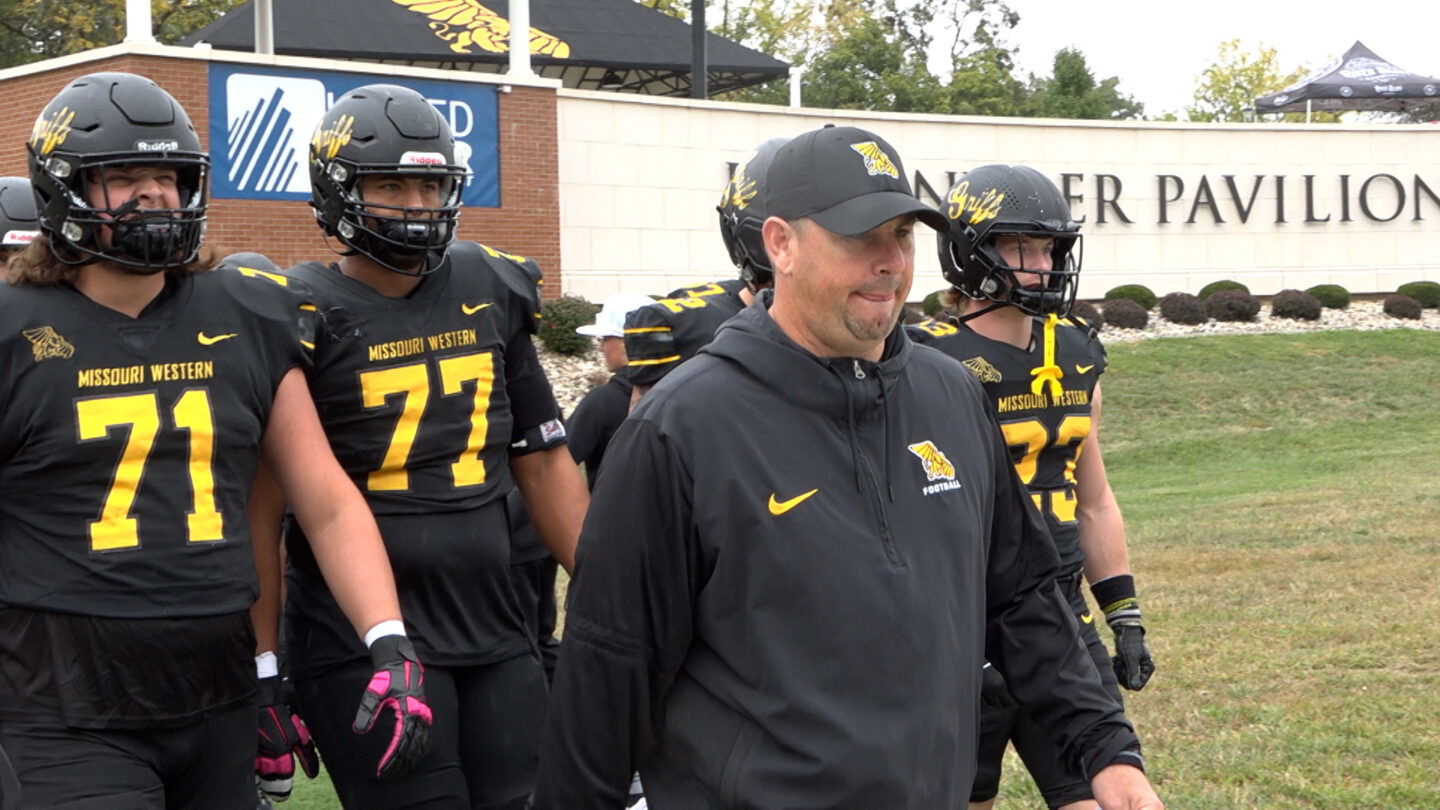Players, coaches navigate whether college transfer portal is friend or foe

By Riley Funk
The transfer portal for college athletics is not a new entity, but the way it’s being used now compared to years past is presenting pros and cons for coaches and athletes.
The transfer portal is an online database that allows college athletes to communicate with other coaches if the athlete has intentions to transfer to a different school.
College athletes have the opportunity to transfer once as an undergraduate without having to sit out a whole season at the Division I level, according to the Associated Press. The rule was changed in the NCAA in 2021.
Tyler Fenwick, head football coach at Missouri Western State University, is coming off his first season with the team with an 8-4 record.
The offseason means coaches have to fill positions for seniors who have completed their careers. But now, with players taking advantage of the transfer rule, it creates new challenges with the roster.
“You always need to stay ahead of it in recruiting,” Fenwick said. “It’s constantly changing and you got to stay ahead of it. Now you almost have to recruit your own team and find out what they’re thinking.”
Fenwick and other coaches know they have to battle against the positives for players, including opportunities for more playing time or the option to go to a bigger or more appealing school.
Even some of Fenwick’s recent players, including Keith Russell Jr., considered entering the transfer portal. The former offensive lineman from Frisco, Texas, is currently training for his pro day in March with high hopes of making an NFL roster.
Russell started off his collegiate career at Langston University in 2019, He transferred to Navarro Junior College after his freshman year and then transferred to Missouri Western State University midway through 2021.
When Fenwick took the helm for the team, Russell, along with his teammates on the starting offensive line had the opportunity to transfer.
“Our thing was if we came in together, we wanted to finish together. We all came together like, ‘Hey, if we’re all going to stay, we’re all going to stay, but if one of us leaves, we’re all going to go,” Russell Jr. said.
The five banded together, rallying behind many coaches on staff including Fenwick, assistant coach Todd Throckmorton and assistant coach Patrick St. Louis.
“I’m 100% glad we stayed here,” Russell Jr. said.
Russell Jr.’s experience and others highlight the fact that it’s not always the best move to transfer. When players jump from a Division II school to a Division I after a great year, it could change their sports career.
“A kid could stay here and he could end up being a Hall of Famer and having an unbelievable career that he can talk to his kids about … or … he can go be a part of a Division I program and be a guy in the room kind of thing,” Fenwick said.
According to NCAA studies through the transfer portal, student athletes are going to more often than not enter the transfer portal after the team’s season or at the end of the academic year.
Each transfer portal window is different. For example, football at the Division I level has a 30-day window beginning the Monday after the FBS conference championship games. For athletes competing in postseason play, such as bowl games or the College Football Playoff, there is an additional five-day window after the game is completed.
Missouri Western sits at the NCAA Division II level of athletics. For Division II transfers as a whole were 2,293 undergraduate and 740 graduate transfers in 2022. In 2021 there were 1,798 undergraduate and 615 graduate transfers that entered the portal.
Fenwick said a big fear he has is a Division II school like Missouri Western turning into a stepping stone to Division I.
“We’re a four-year university, we have a really good balance in Division II right now,” Fenwick said. “Academics is important, the competition on the playing field is important and those things work hand in hand.”
He thinks that his players and others at Division II have a foundational love of sport. This is because players don’t profit as much over NIL (name image and likeness) at the Division II level.
“You see guys that are on partial scholarships that maybe have to work during the day to pay off a bill or whatever,” Fenwick said. “They’ll sacrifice things to make it work because of the love of the game.”
Division I athletics has a higher uptick in transfers as a whole. In 2022 there were 8,197 undergraduate transfers and 3,705 graduate transfers. This is a spike compared to 2021 numbers where there were 6,876 undergraduate transfers and 3,253 graduate transfers.
These numbers have created issues for recruits coming out of high school.
Russell Jr. said the addition of the transfer portal makes it more difficult for incoming freshmen to find a roster spot with certain colleges.
From a player’s perspective, he said players transferring to different schools creates less of a guessing game with coaches fitting players into their respective schemes.
“Those guys, you don’t have to really coach them, you don’t have to teach. They know how to pass and they know how to run, block, their feet should be good,” Russell Jr. said. “You know what this kid did at his other school, so you know what he can do and what you can make him do.”
On the flip side, a majority of freshman recruits have to earn playing time through experience and learning different schemes, whether it be on offense on defense. Russell Jr. said for many bigger schools, having students transfer in and take positions right away is easier from a coaching standpoint.
“Why would you try to rebuild if you can go grab a junior, a senior who knows what they’re doing? They’ve already handled school. You don’t have to deal with the’ I want to go home’ the home sick stuff, either.”
While freshmen recruits are facing adversity with the transfer portal, Russell offers advice for players in order for them to stay ready for their opportunity.
“Keep your head down, keep working and stay true to your path, your time will come,” Russell Jr. said. “Go to the school that wants you because if they’re offering you, they want you. It’s not just they’re not just throwing offers up to anyone like they’re offering you, they want you.”
Fenwick admits that he’s an old school football coach at heart. He loves the opportunity to see young players develop from freshmen to seniors and see what men they turn into after graduation. He has a worry the relationship part of coaching might be lost, where it’s more about money and less about relationships.
“You kind of have to be careful about getting too caught up in it because you want continuity in your program,” Fenwick said. “The further and further this maybe it gets away from the old school foundation of college athletics it just becomes more of a business than the relationship and we don’t want to see that happen.”




